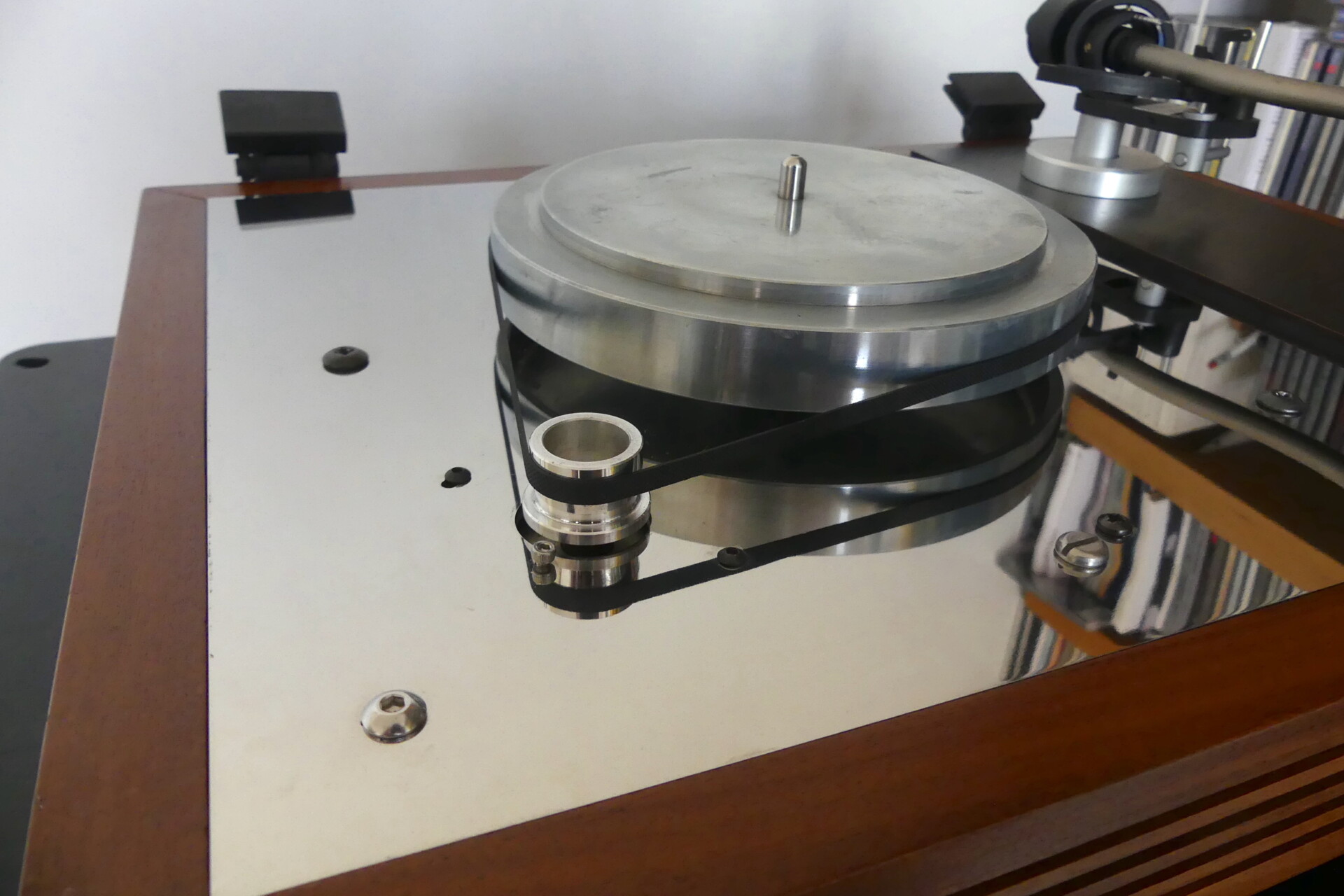When I listened exclusively to vinyl on my original model Rega Planar 3 (the one with the S-shaped RB200 tonearm), I was largely unaware of issues around pitch accuracy, timing and dynamics, partly because I had no alternative frame of reference. It was only with the arrival of CD that I started to notice the slight warble on piano and other long notes, arising from the small variations in platter speed. It was probably less obvious on the rigid Rega than it was on this Linn, but when you compared its performance to CD, which simply doesn’t exhibit this trait, it was immediately (and irritatingly) apparent. Which raises the whole question of timing and speed stability. Linns of yore were always famed for their facility with timing, in the musical sense, so it’s important to separate out the notion of tiny variations in platter speed, and their specific effect on pitch stability, from the more holistic notion of timing which depends on longer term temporal consistency. Whether pitch instability is something you live with or find difficult to ignore, probably depends on what triggers you as an individual listener. For me, it was an annoyance and one I couldn’t overlook. It’s probably one factor which led me to the solid stability of the VPI platforms, because Linn-style suspended sub-chassis designs do seem inherently more susceptible to it. I infer that the movement of the suspended sub-chassis relative to the motor, creates its own interactions, probably via the drive belt and, small though they may be, they’re still easily audible.
Plate tech sonics
Enter, then, the new top plate, and an immediate, significant and extremely gratifying reduction in the previous warble. It’s no longer such an intrusion, and promises a firm foundation for the next steps on my chosen path. But the real pay-off is in the way the deck now integrates the various musical parts. The Linn LP12 has always been able to carry a tune, the (in)famous Linn ‘tune dem’ playing on the ‘table’s ability to see off much of the competition in this regard, setting standards for others to follow. It’s not about simple pitch accuracy, so much as a sense that the tune is easy to follow. The fluidity in the LP12’s delivery has always made it easy to grasp musical lines, phrasing, and the way good musicians play with things like placement, timing and emphasis to engage the listener emotionally. So, the ‘table has always communicated in terms of emotional impact and musical message; just less of the musical organisation and pattern that helps resolve all this into a coherently constructed piece of work. In a very real sense, ‘tunefulness’ also served to deflect attention from areas where the LP12 was a less than stellar performer. In my case – and after recent listening experiences with better amplification and less intrusive speakers – I found my LP12 lacking a certain something in terms of the overall form and structure behind the notes.

Now, though, post-top-plate, the bones of the music are revealed and resolved much more successfully. It’s easier to get behind the tunes to the structure: the harmonies, the instrumentation, the timing and emphasis, the spatial relationships between parts, the myriad other moving parts that support, enhance and create context for those tunes. Where, before, a lot of that was subliminal unless you concentrated your attention on it, now it’s more ‘present’ but in a natural, unforced way. And that’s so important here: over the years, many LP12 modifications seem to have sought to align vinyl more closely with digital in terms of the presentation, sometimes diluting that magic secret sauce in the process. Anything I do to this deck needs to retain its essence, the things that drew me to it in the first place, or it won’t be a successful exercise. Any suggestion that the presentation has moved away from that natural, fluidity, ease and flow, is something I’m keen to avoid.

